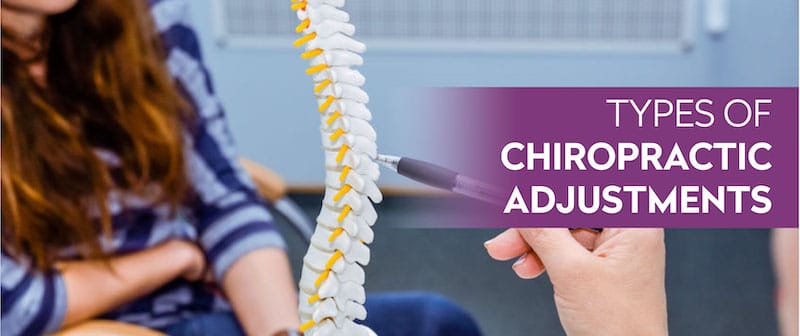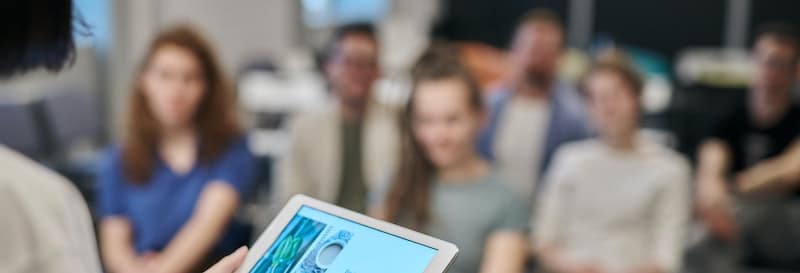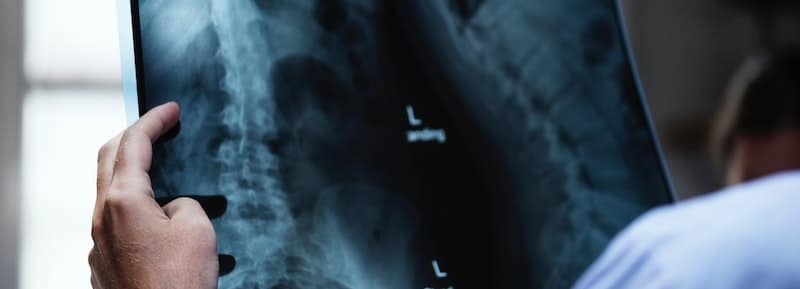
Chiropractic is a form of integrative medicine that focuses on diagnosing and treating misalignments of the joints and spinal column. Within chiropractic, there are a number of adjustment techniques that can effectively treat a number of joint and spine issues, such as scoliosis.
To better understand the role that chiropractic treatment plays in preserving the health of the spine and related joints, let’s first address the role of chiropractors and how chiropractic adjustments actually work.
As chiropractors, our job is to adjust the spine addressing the spinal column, its joints, and a variety of mechanical and neurological issues, to improve mobility of the spine, correct misalignments, and restore the spine’s natural curves as much as possible. Fortunately, there are many techniques and types of adjustments we can use to make that happen.
When most people think of going to see a chiropractor, they think of having their bodies awkwardly pulled on while hearing their spine and joints crack and pop. Some people fear this process, and to those individuals, I will say there are a variety of chiropractic adjustment techniques that vary in intensity, many of which are very gentle.
Part of our job here at the CLEAR Scoliosis Institute is to educate and train chiropractors to determine exactly what type of treatment intensity a patient needs and can handle in their chiropractic care.

Chiropractic adjustments work by producing precise movements that stimulate the affected area’s neural receptors.
When the area’s neural receptors are stimulated, nerve impulses are produced that send important data about the affected area to the brain. Then the brain processes the information and updates its status of the misalignment and the associated areas of the body.
Once the brain has assessed the changes made by the adjustment, it starts sending out commands to the muscular system, and all the other other systems within the body, to promote optimal healing and function.

There are multiple forms of manual and instrument assisted adjustments we can do, and part of our treatment approach is to determine which form is going to be the most effective and the least invasive.
Cox Technic is a well respected adjustment procedure. This type of non-force adjustment is very gentle and effective.
One of the main advantages to any form of successful chiropractic treatment is that it’s noninvasive and carries very few side effects. When compared with the invasive nature of spinal surgery, you can see how advantageous gentle, effective chiropractic treatment can be.
Cox Technic is a form of spinal adjustment that’s performed while the patient lies on a Cox table, a specially-designed chiropractic instrument.
This technique uses the principles of flexion-distraction and spinal decompression to manipulate the spine.
Flexion Distraction is a chiropractic technique that effectively treats conditions of the spine. This non-surgical technique can increase spinal motion and resolve issues such as herniated or bulging discs.
This form of chiropractic adjustment is performed on a segmented table that moves as the chiropractor gently adjusts the spine to restore movement in the desired direction.
The adjustments work in tandem with the table’s movements to stretch and decompress the spine: relieving neck, back, and radiating pain in the arms and legs.
Spinal decompression is a computerized therapy that works well with chiropractic adjustments to relieve disc pain in the neck or back. It is a form of motorized traction used to reduce back pain. This is done by gently stretching the spine, changing its force and position.
When its position is changed, pressure on the spinal discs is relieved. This can cause herniated or bulging discs to retract, taking pressure off nerves, muscles, and joints.
Spinal decompression relieves pain and also increases the movement of oxygen, and nutrient-rich fluids into the discs so they can become stronger and heal.
Flexion distraction and spinal decompression are highly effective in the following areas:
This technique is a therapeutic strategy that’s known to be particularly effective for treating disc problems, and even certain types of stenosis. These adjustments are typically given as a series of care and after the condition has resolved, this combination of chiropractic adjustments and therapy is done regularly to maintain results.
As a gentler form of chiropractic adjustment, this is recommended for elderly people or for those struggling with severe/acute disc problems.
One of the most important aspects of chiropractic adjustments is being able to tailor our adjustments to suit the needs of each individual spine and the condition affecting it. Part of what allows us to accomplish this is the use of precise chiropractic tools, such as the Activator adjusting instrument.
The Activator Method is a widely researched and popular chiropractic technique based on the use of a precise Activator adjusting instrument. This form of instrumented chiropractic adjustment is often performed to address pain in the back, neck, and all the other non-spinal joints in the body.
Traditional instrument adjustments use a high-velocity diversified technique; the Activator method relies on the use of the Activator adjusting instrument to deliver painless quick, high-velocity impulses to the joints of the spine to restore motion in the specifically-targeted joint/joints.
The speed at which specific joints can be targeted and adjusted is advantageous in two primary ways. First, the high-speed nature of the instrument means that muscles don’t have time to tense up, making them more responsive to treatment; second, the force can be applied and targeted very precisely to the specific joint or area in need of treatment, allowing the joint to remain in a relaxed position during the adjustment.
The benefit of this technique is that it’s a simple and painless way to control the force of the adjustment so that each individual joint of the spinal column or other area being treated can be affected by the instrument. This allows patients to get effective adjustments quickly and comfortably.
Here at CLEAR, we train chiropractors to use a chiropractic adjustment instrument called the ArthroStim. This small handheld machine helps us augment our adjustments by delivering 1-12 incremental stimulations per second.
As a chiropractor, I can deliver hands-on manual thrusts to affected areas to stimulate the neural receptors, but with the help of the ArthroStim, my thrusts become faster and more precise.
This instrument takes the energy of a single thrust and divides it into rapid successive bursts, increasing the efficacy and comfort of our adjustments.
CLEAR-certified doctors use the ArthroStim when we need to make precise adjustments in a smaller area, such as the neck or when working with young children.
In the context of scoliosis, we first conduct a thorough physical examination, then analyze the patient’s X-rays to find out the direction we want the spine to move and how much force we think it will take for the adjustments to restore the spine’s alignment.

We also use a more mathematical and science-based adjustment technique known as ‘Chiropractic BioPhysics Technique’ (CBP). This approach analyzes the spine and determines which type of adjustment would be most effective, safe, and comfortable for the patient.
Chiropractic BioPhysics (CBP) is sometimes described as a ‘higher level’ of chiropractic care, as it requires a comprehensive understanding of the mechanics of the spine and provides a carefully structured systemic approach to chiropractic care.
CBP combines spinal adjustments with mirror-image postural adjustments, postural exercise, and traction.
Many chiropractors turn to CBP to decrease their patients' pain, but at CLEAR, we use it to address the underlying issues that are contributing to both pain and spinal curvatures like scoliosis and kyphosis.
When dealing with scoliosis, we know that when the spine’s healthy curves are lost, it doesn’t just affect the spine at the site of the scoliosis, but throws off the biomechanics of the entire spine.
CBP can help us correct the underlying cause of scoliosis-related pain by correcting the structural issue, restoring function, and removing pain on a longer-term basis.
The Pettibon System is another highly effective form of spinal and postural correction that we teach here at the CLEAR Scoliosis Institute.
The Pettibon System emphasizes the holistic care of a patient’s rehabilitation by integrating spine and posture correction, muscular development, and nutrition.
Within this system, body weighting exercises are an effective means of spinal and postural correction that have become part of our CLEAR treatment protocol.
Based on the principles of uneven spinal weighting, we apply external forces to the spine that cause it to respond in the way we want it to. If we apply uneven weight to the spine on one side, we know the spine’s natural response will be to react to it in predictable ways that can be used to retrain the body back to a balanced posture.
With uneven spinal weighting, our treatment goal is to get the spine and its surrounding muscles to respond to the external forces we are introducing.
Another well known chiropractic approach that focuses on addressing issues of the spine and joints as part of an integrative system of health is known as the ‘Sacral-Occipital Technique’.
Also known as ‘SOT’, the Sacral-Occipital Technique was developed to restore the balance and integrity of the connected relationship between the head, pelvis, and spine.
This technique is gentle and noninvasive, which is why it’s favored for sensitive patients and for people suffering from frequent and unexplained headaches.
SOT is based on the anatomical fact that the brain and spinal cord form the body’s central nervous system, also known as the command center. If the spine is misaligned, it affects multiple areas of the body and their ability to function optimally.
During SOT treatment, blocks or wedges are precisely placed under the patient’s pelvis while the chiropractor applies gentle pressure to make adjustments that restore the spine’s alignment and the central nervous system’s function.
When it comes time to decide if chiropractic treatment is right for you, know that there are numerous adjustment techniques available to suit a wide range of patients and their conditions.
From manual hands-on adjustments to instrument-guided adjustments, chiropractic care can treat a number of joint and spinal conditions, from disc issues to stenosis and scoliosis.
Here at the CLEAR Scoliosis Institute, our certified doctors are trained in multiple modalities so our patients have access to the benefits of a wide variety of chiropractic adjustment techniques.
Chiropractic BioPhysics CBP - The Science of Spinal Health
Clear-institute.org - Weight-Bearing Exercises and Scoliosis
Spinehealth.com - Activator Method Chiropractic Technique
Pettibonsystem.com - The Pettibon System
Disclaimer: The author’s views are his or her own and may not reflect the views of CLEAR Scoliosis Institute.

CLEAR provides a unique and innovative way of understanding scoliosis. Sign up to receive facts and information you won’t find anywhere else.

You made some nice points there. I did a search on the subject and found nearly all persons will agree with your blog.
I would like to say thank you for this great post which is about chiropractic care.
Thank for the great content. I cant wait to read much more from you.
This is a great article. I've learn some new information.
Thank you so much for sharing all this wonderful info.